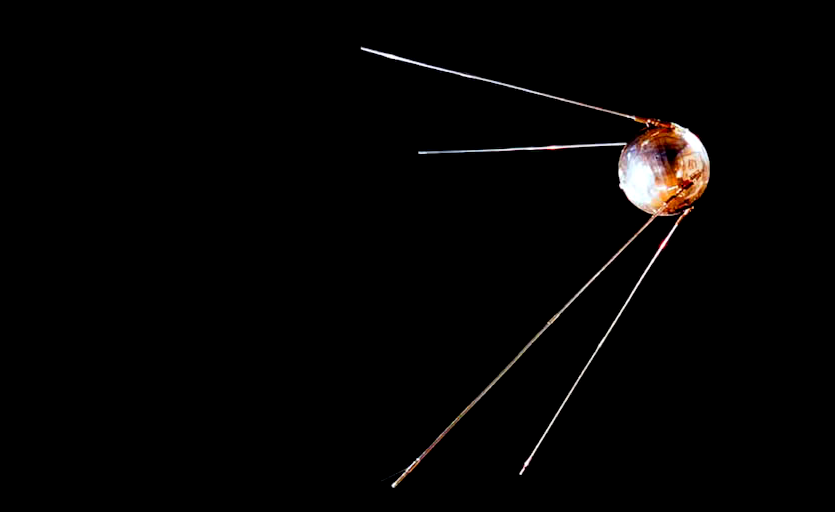Sputnik Moments
A Quiet Beginning
It was an ordinary evening in October 1957 when the silence of the post–Second World War peace was broken. Not by an explosion, not by a crash — but by a quiet, repetitive beep.
That sound wasn’t carried through the open air, but through the new technologies of the day: ham radios, shortwave broadcasts, even television reports. Around the globe, hobbyists and professionals tuned in and heard it. The signal was simple, almost childlike, but unmistakable: humanity had placed something of its own into the night sky.
It was the voice of the sky itself changing. A new wanderer was up there among the stars.
Its name was Sputnik. In Russian, it means “fellow traveler” or “companion.” A modest name, almost poetic, for an object that sent shockwaves through politics, science, and imagination all at once.
Proof in Orbit
With Sputnik, humanity crossed a threshold. For the first time, a human-made object was in stable orbit around Earth. Spaceflight was no longer a thought experiment. No longer theory. It was proven fact — announced by a lonely, mechanical signal looping overhead, circling every ninety-six minutes.
But this wasn’t just science. It was geopolitics. That small sphere was launched by one half of a bitterly opposed world order. The USSR, locked in nuclear tension with the United States, had claimed the heavens first. For Americans who woke up to newspaper headlines the next morning, it wasn’t just a story about technology. It was about vulnerability. If a satellite could fly, how long until missiles followed the same path?
The U.S. scrambled to respond. Within months, defense budgets ballooned, research centers expanded, and new institutions were born — DARPA, NASA, a sharpened military-industrial complex. All because of a polished metal ball, no larger than a beach ball, beeping from orbit.
Human Moments of Realization
Sputnik was one of those rare inflection points where humanity learns by encounter, not by teaching. It wasn’t a theory in a textbook. It wasn’t a line in a strategy document. It was a reality that shifted imaginations everywhere: new fears, new dreams, new hopes.
History has other such moments:
The mushroom clouds over Hiroshima and Nagasaki taught the world we were living in the nuclear age. Power once unthinkable had become unbearably real.
The industrial shrapnel of the First World War ended the illusion that war was still glorious or heroic — and gave soldiers steel helmets instead of brass bands.
Even earlier: the Black Death in Europe showed entire populations how fragile their social and spiritual systems were, setting the stage for revolutions in medicine, faith, and governance.
These are “Sputnik moments”: when a single event forces a collective shift in perception. When the world changes course because something that was once unthinkable is suddenly undeniable.
Recognizing Today’s Sputnik Moments
The challenge is noticing them in real time. Was 9/11 such a moment? For an entire generation, it rewrote the logic of global security and surveillance. Was Covid-19? Undoubtedly — a virus that stopped the world’s movement overnight and forced us to reconsider the fragility of supply chains, healthcare systems, and everyday life.
And is AI, right now, playing the same role? The beep may not come from orbit this time, but from code. Quiet signals hidden in algorithms, chatbots, and datasets — reshaping how we think about work, creativity, even trust.
Moments like these re-wire what humanity thinks is possible, what it fears, what it strives for. They’re pivot points. Quiet beeps that echo louder than bombs.
The trick is to hear them when they first arrive — before they’ve reshaped the landscape completely.

